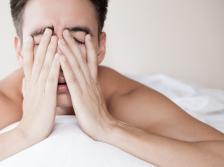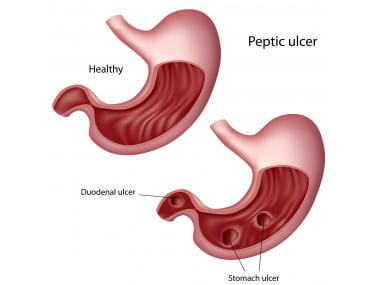The Controversy Over Testosterone Supplements
Testosterone use has become quite the fad these days, but is it effective? What are its associated risks? Who should actually be prescribed testosterone? The House Call Doctor examines the hoopla over the hormone.

Thanks, in large part, to the ever-powerful media’s brainwashing effects, and the barrage of skewed ads from fortune-hungry pharmaceutical companies, men as young as in their 20’s are Googling their symptoms in search of a “cure” for their depression, while middle-aged men reminiscing about their virile youth are turning to testosterone in hopes of reclaiming their stamina and libido.
These not-so-well-intentioned advertisements on TV have even coined the catchy term, “low T,” while attempting to offer what they’d like to portray as “the fountain of youth.” The pharmaceutical companies spend billions (yes, that’s with a “b”) each year marketing these drugs to the average consumer, attempting to convince them that this “low T” craze is the answer to the normal aging process–all with the purpose of selling their outrageously over-priced drugs, of course.
But is testosterone supplementation really the answer?
Recent studies have found a possible link to the use of testosterone and heart disease (the number 1 killer of both men and women in the U.S.), and as a result, the FDA has since issued a warning on the use of testosterone, while it researches the data. So certainly, testosterone has its potential risks, and isn’t for everyone. There may be a small subset of patients that it can be appropriate for – but who?
Let’s dissect this rather controversial medical topic in today’s episode.
What Is Hypogonadism?
The term “hypogonadism” is one that doctors often use to diagnose patients when prescribing testosterone supplementation. “Hypo” means “low,” and “gonads” refers to the sperm-producing organs in men, or the testes. Therefore, for our purposes today, the medical diagnosis of 
As men age, their testosterone levels naturally and normally decline – the same occurs with women and estrogen. As this normal aging physiologic pattern pans out, it occasionally places men at risk for some complications of hypogonadism, including:
- Decreased libido
- Loss of body hair
- Low bone density (increased risk of fractures)
- Breast growth (a term called “gynecomastia” in men)
Other more common symptoms–including fatigue, depression, decreased muscle mass and increased fat mass–are often more complex, and are not always attributed to low testosterone levels. Sure, using testosterone may contribute to improving those frustrating symptoms, but it can be simply a “mask,” without addressing any other underlying health issues (such as anxiety, depression, inactive lifestyle, poor nutrition, etc.)
In addition, exogenous testosterone use has some unwanted risks (some of them very serious):
- Prostate enlargement, and exacerbation of prostate cancer
- Infertility and diminished sperm production
- Worsening sleep apnea
- Elevated blood hematocrit levels (placing patients at risk for blood clots)
- Acne
- Decrease in testicular size
- Possible acceleration of heart disease (currently under investigation by the FDA)
 Diagnosis of Hypogonadism
Diagnosis of Hypogonadism
If you display any signs or symptoms of hypogonadism, your doctor can test your testosterone levels via a blood test. Ideally this will require fasting levels in the morning, to be most accurate; the recommendation is to check fasting levels between 8am and 10am, and to confirm consistency on several occasions.
Treatment of Hypogonadism
Treatment is controversial, and it’s important to note that the effectiveness of these treatments have not even been confirmed. You heard right: studies haven’t even confirmed or reached a consensus that testosterone works, and to what degree.
In addition, the “normal” blood testosterone range has not been clearly established. either. The goal of treatment is to replenish the testosterone stores up to the normal blood level range. So, if we can’t even define what “low” testosterone really even means, then how can we shoot for a “target” level when prescribing it?
With all that said, however, for some men with signs and symptoms of hypogonadism, and a confirmed consistent low morning testosterone level, treatment may be considered by your doctor when the symptoms are interfering with quality of life. It is important that the patient is aware of the full and complex picture–that there’s no guarantee that it will work or to what degree it will work, and that there are potential risks.
If you do consider testosterone, I would not sleep at night if I didn’t mention that there are generic and MUCH cheaper options than the ads you see on television – please consider this cost difference when selecting your choice.

Share your ideas and learn more quick and dirty tips with us on the House Call Doctor’s Facebook and Twitter pages! You can even find me on Pinterest!
Please note that all content here is strictly for informational purposes only. This content does not substitute any medical advice, and does not replace any medical judgment or reasoning by your own personal health provider. Please always seek a licensed physician in your area regarding all health related questions and issues.
Photos of Sleepless Man. Balding Man, and Man with Headache courtesy of Shutterstock.
You May Also Like…


 Diagnosis of Hypogonadism
Diagnosis of Hypogonadism



